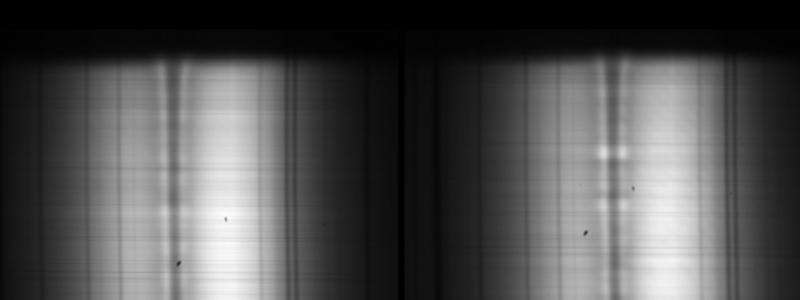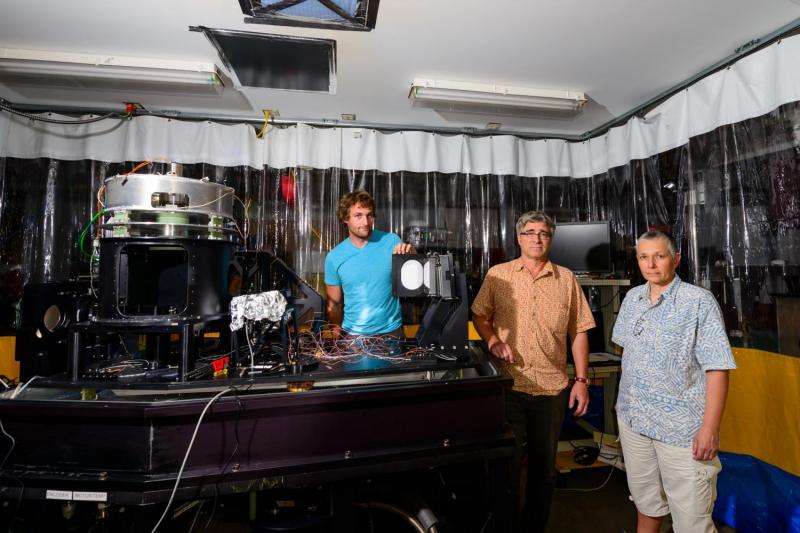Infrared instrument for world's largest solar telescope catches its first rays

The Daniel K. Inouye Solar Telescope (DKIST), currently under construction on Haleakala, Maui, is expected to start observing the Sun in 2020. When it does, it will rely on two complex infrared instruments being built by the University of Hawaii Institute for Astronomy (IfA). Their goal is to measure the Sun's weak magnetic field.
The first of these to be completed is called the Cryogenic Near-Infrared Spectropolarimeter (CryoNIRSP). In a major milestone, it took its first look at the Sun from the laboratories at the IfA's Advanced Technology Research Center on Maui. The optical design was lead by Dr. Don Mickey, now retired from the IfA.
Instrument scientist Dr. Andre Fehlmann said, "These first trial images from CryoNIRSP in visible light show that the innovative optical design will be sensitive enough to see the Sun's magnetism." Project manager Dr. Isabelle Scholl added that "CryoNIRSP is being completed in the Pukalani, Maui labs and will be delivered to the summit of Haleakala within a year, when the telescope can accept our instrument."
CryoNIRSP weighs about two tons, and was constructed on a budget of $6M provided by the National Science Foundation. The project leader, Dr. Jeff Kuhn said, "As soon as DKIST becomes operational, this will become the workhorse that local scientists and visitors from all over the world will use to trace the Sun's coronal magnetism and its influence on the Earth."
This work was supported in part by the National Science Foundation under Grant No. AST-0415302. Any opinions, findings, and conclusions or recommendations expressed in this article are those of the author(s), and do not necessarily reflect the views of the National Science Foundation.

Provided by University of Hawaii at Manoa





















